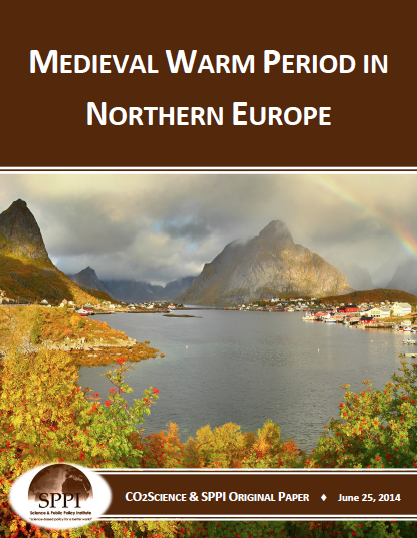News / Science & Technology
Medieval Warm Period in Northern Europe

Was there really a global Medieval Warm Period? The IPCC used to acknowledge there was; but they have long since changed their view on the subject. Mounting evidence, however, suggests they were wrong to do so; and in this summary, both old and new important data from Northern Europe that support their original belief are described and discussed.
Studying "four well-preserved continuous sediment sequences from the southern flank of the Skagerrak [58.2-58.6°N, 7.6-8.2°E]," which he described as "a current-controlled sedimentary basin between the North and Baltic Seas," Hass (1996)1 carried out "granulometric and stable oxygen isotope analyses ... in order to reconstruct climate fluctuations and to evaluate climate impact during the upper Holocene." These data and his analyses of them led him to conclude that the "Modern Climate Optimum was reached between 1940 and 1950, when temperatures exceeded the present day mean by 0.5°C." Prior to that was the Little Ice Age, which he placed at about AD 1350-1900, while before that the Medieval Warm Period (AD 800/1000-1350) held sway, the climate of which, in his words, "was characterized by warm summers, mild winters and little storm activity." Preceding this interval was what has been called the Dark Ages Cold Period, which Hass did not name but placed between AD 400 and 700, while preceding that cold spell was the Roman Warm Period, running from approximately 400 BC to AD 400. And preceding these climatic epochs was another pair of cold and warm periods.
